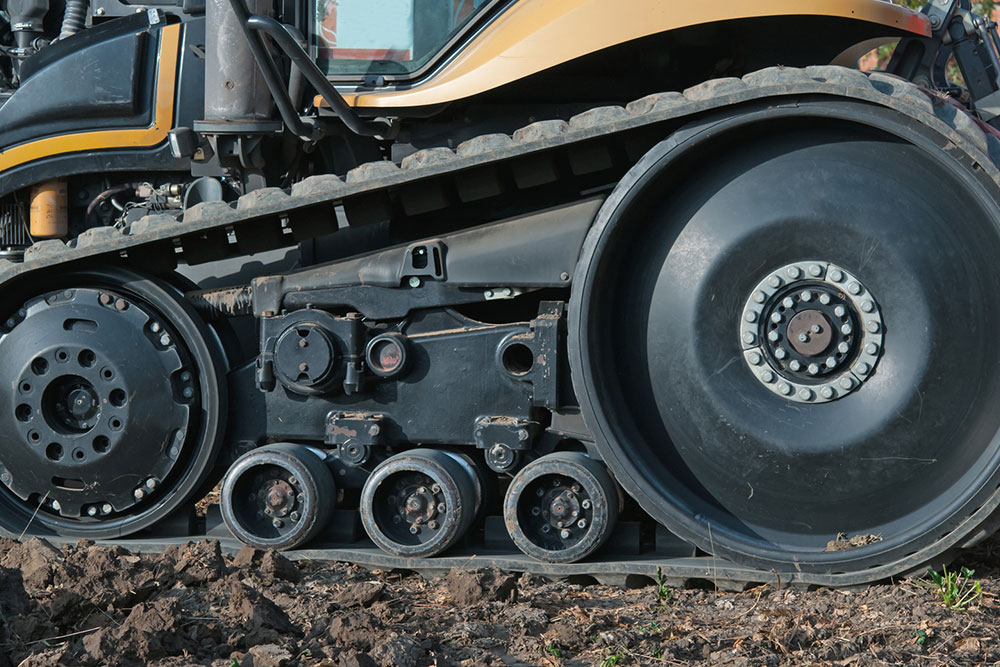Guide to selecting rubber tracks

A rubber track is a circular belt made of rubber and additional materials, such as metal or fiber. It is primarily used in moving systems like agricultural machines, construction machines, and other vehicles. Rubber tracks offer traction and are designed to guarantee machine stability, low ground pressure, and a smooth ride. There are different rubber tracks, each with different uses. Here are the different types of rubber tracks and their advantages and disadvantages.
Uses of rubber tracks
In different kinds of machinery, different types of rubber tracks are used to keep the movement of the machine smooth and effective. Here are some common examples of the use of rubber tracks in various equipment or machines:
1. Excavator tracks
Those who want to check out excavator rubber tracks for their vehicles should know that they come in two main types. The conventional ones operate on excavators that are designed only for rubber tracks. On the other hand, interchangeable tracks operate on machines with undercarriages with steel chains and rubber tracks.
Interchangeable tracks can further be categorized into two types. The first is the K-rail tracks, which are flat and higher to add reinforcement for the rollers. The second is the non-K-rail tracks positioned on the top of a vehicle’s links. Depending on the machine one uses, it is easy to determine which tracks work best for one’s excavator.
2. Skid steer tracks
These are high-speed moving vehicles that have a different requirement than that of an excavator. Two types of rubber tracks are used for this kind: ASV and conventional. In the ASV style, the molded rubber lug is found inside the track, which picks up on the sprocket. These lugs must be strong enough to take weight, or they may break during movement.
Conventional rubber tracks for skid steers follow the same mechanism as excavators and are designed only for rubber tracks and no steel chains.
3. Crawler carrier tracks
Trucks used to transport large amounts of loads across uneven terrain are called crawler carriers. These trucks are also required to provide low ground pressure. For these vehicles, there are different kinds of rubber tracks used, which are similar to the conventional style but are generally much bigger in size as they have to be proportionate to the truck used to move the load.
Pros of using rubber tracks
There are quite a few advantages of using rubber tracks, as mentioned below:
- They perform well, easily gliding across any surface, including grass or dirt.
- An operating site where there might be a requirement for equipment that uses rubber tracks is usually very loud. However, using rubber tracks absorbs noise while working, so they are much preferred by the operator.
- Compared to a steel track, rubber tracks are faster, meaning the work time is shorter.
- Because of the material, the track is much more flexible. This means that operating the machine is more accessible and less tiresome, so the operator may be able to work with fewer breaks, increasing productivity.
- Those using rubber tracks do not have to worry about expensive maintenance costs. One should be careful when operating the equipment; the tracks will not need much maintenance.
- They are more affordable than the available options, like the steel tracks, so they are easy to buy and cost-effective for the person.
Cons of using rubber tracks
While there are perks, there are also some disadvantages to using rubber tracks. Only after carefully considering their pros and cons should one decide whether to purchase them. Here are a few cons of using rubber tracks:
- Rubber tracks cannot be left uncovered in the sun for too long simply because of the use of rubber and how it responds to hot weather. The wear and tear is faster.
- The gravel surface is not rubber track-friendly, so if the machine needs to work on this rough surface, this kind of track may not be the right choice for the operator.
- If the worksite has contaminants like harsh chemicals, oil, or manure, these rubber tracks will start to deteriorate quickly.
The pricing of rubber tracks depends on various factors, like their usage, size, and thickness. Depending on their size, most rubber tracks cost between $460 and $3,400. One should assess their needs and budget before making a purchase decision. Additionally, one should also factor in the climatic conditions of where they stay, as that hugely determines how quickly a rubber track will start to weather.



